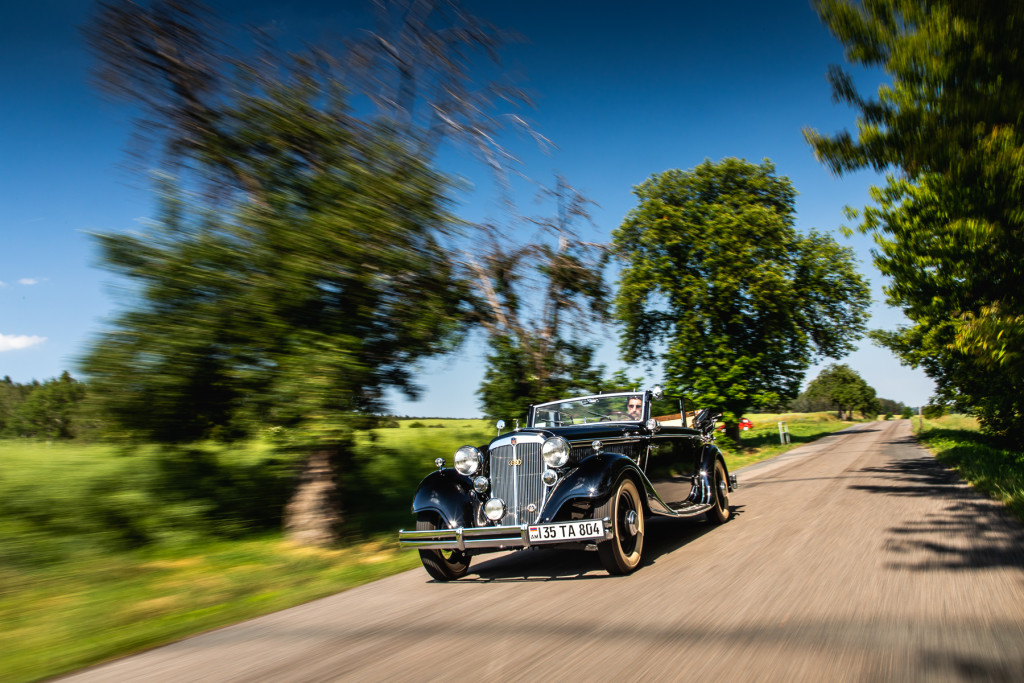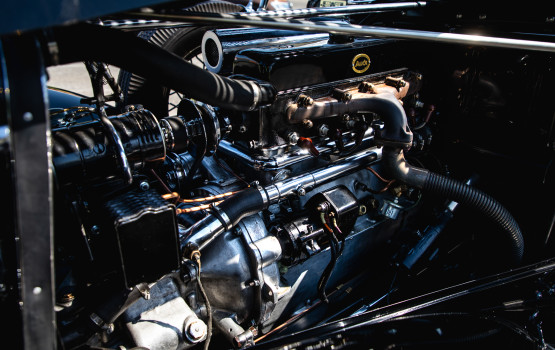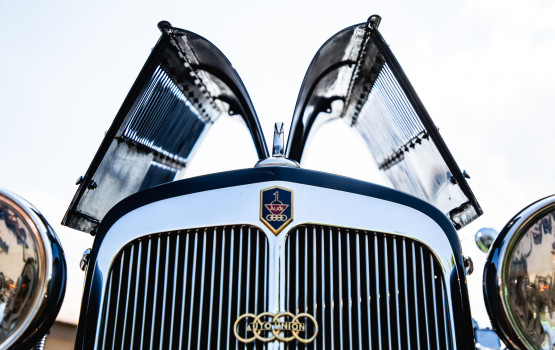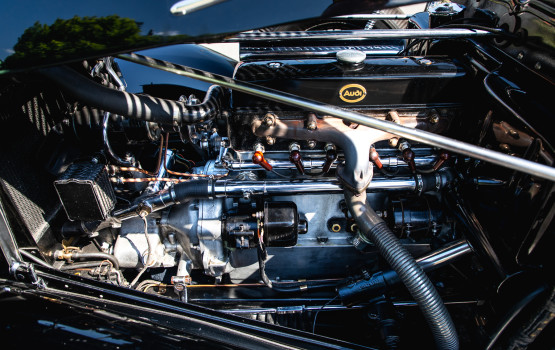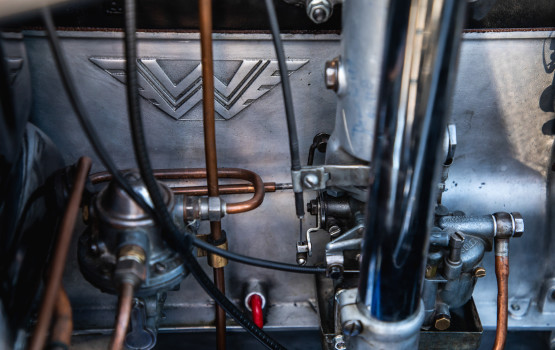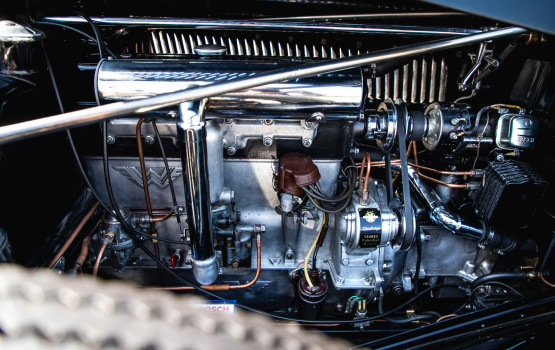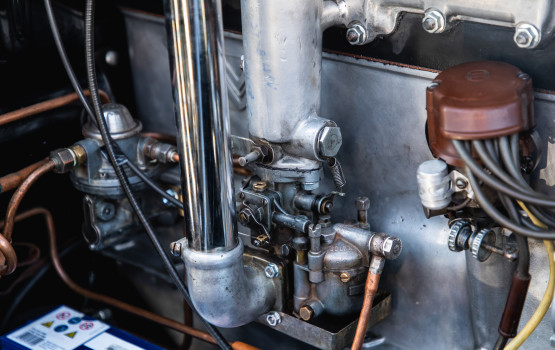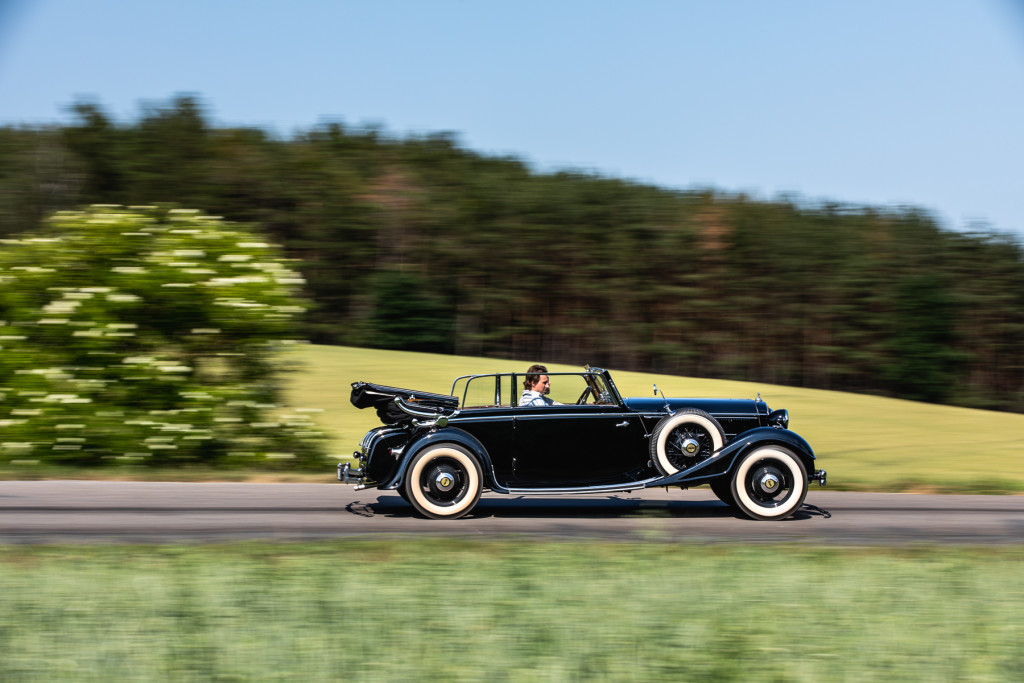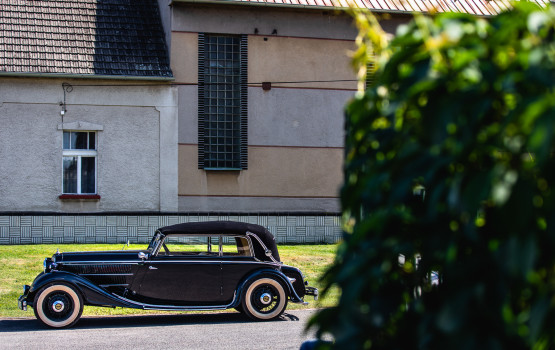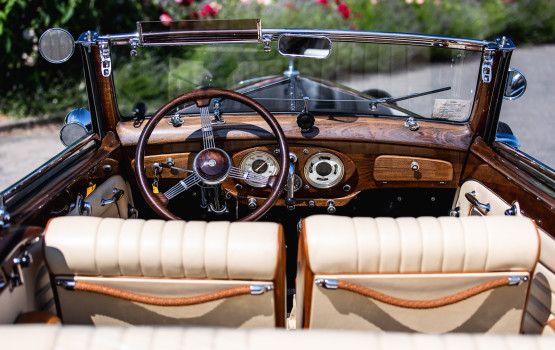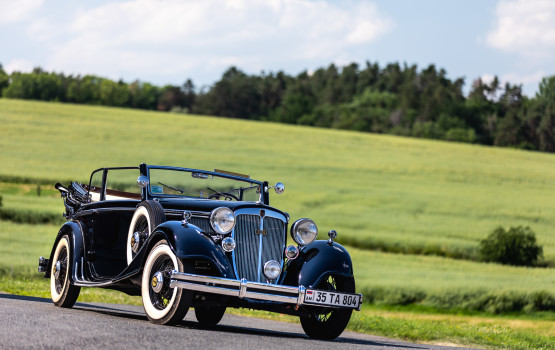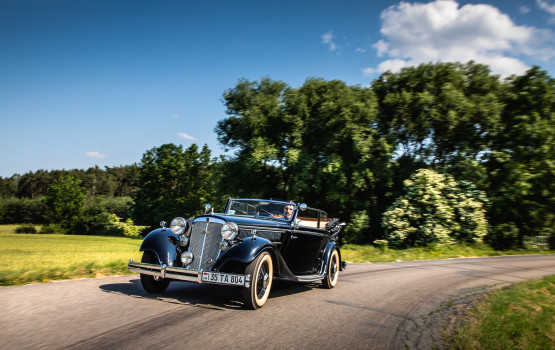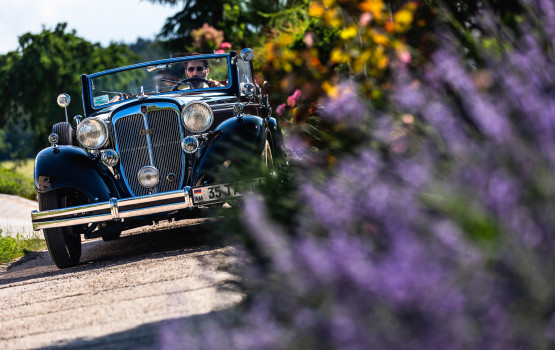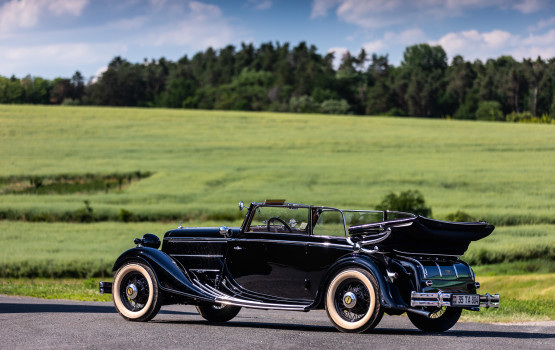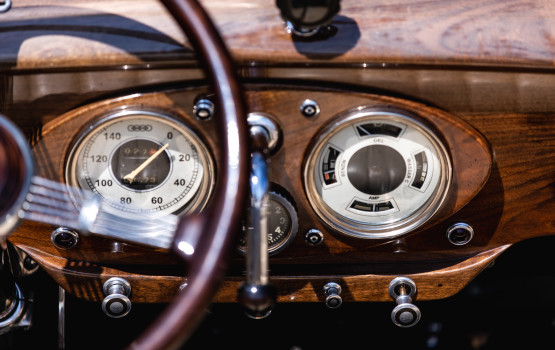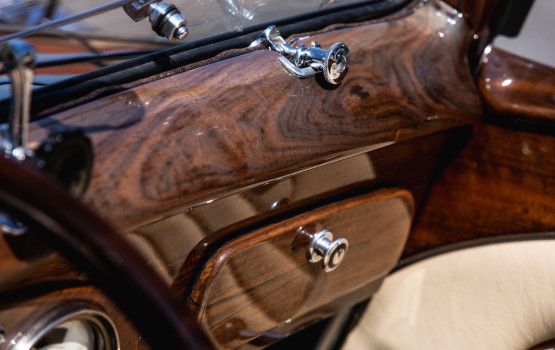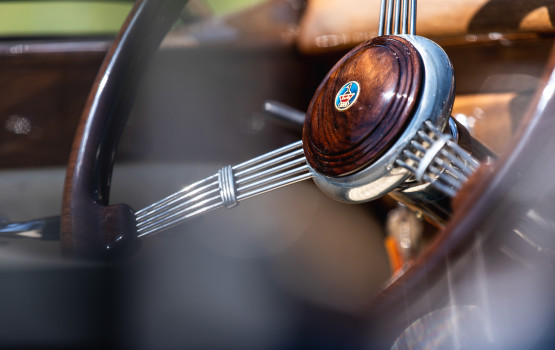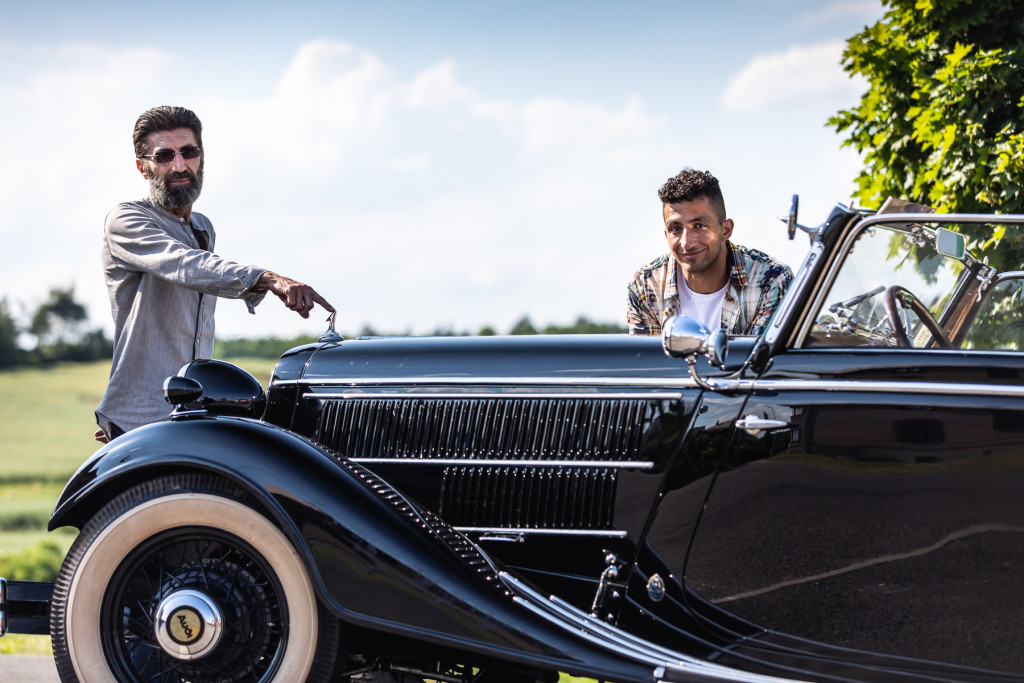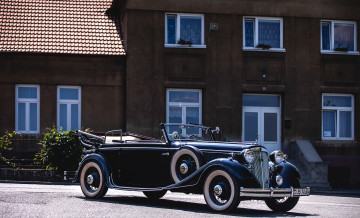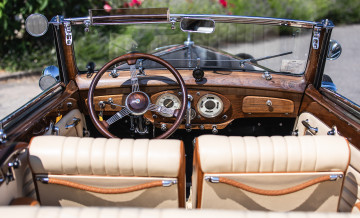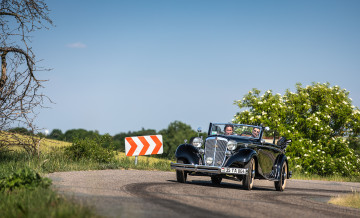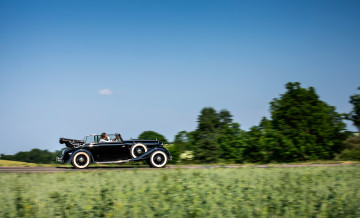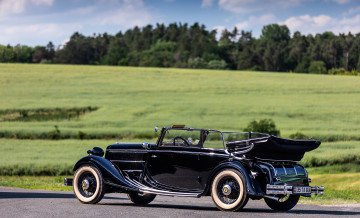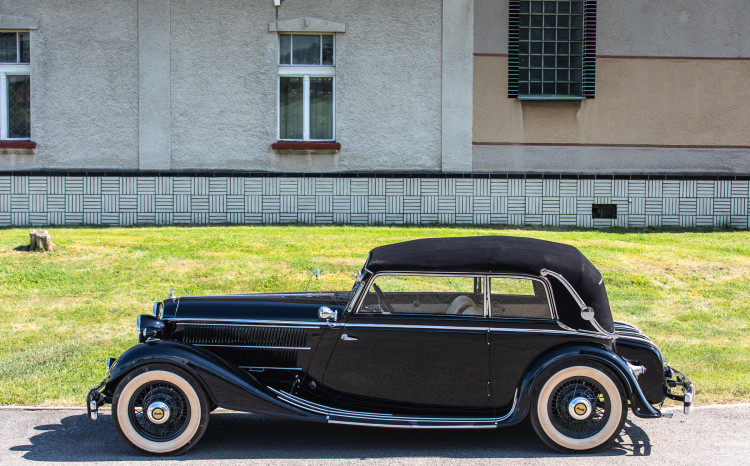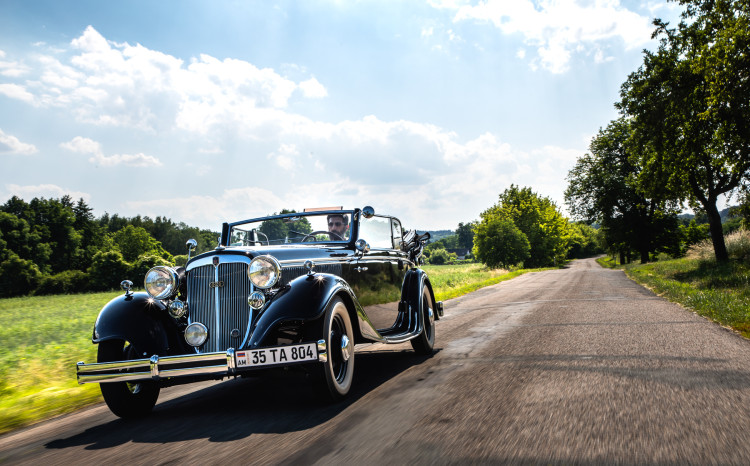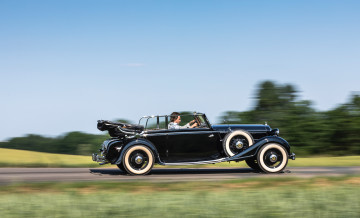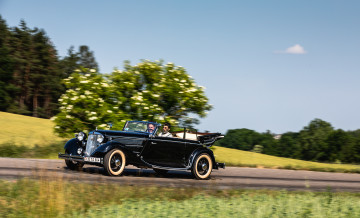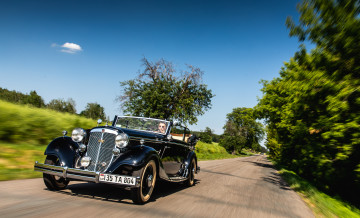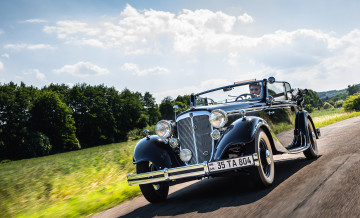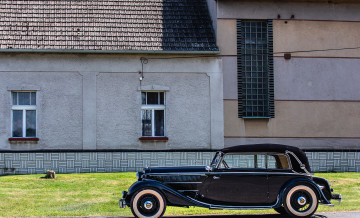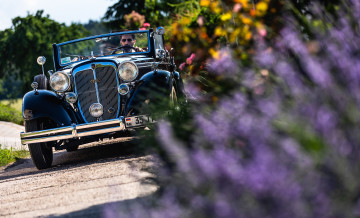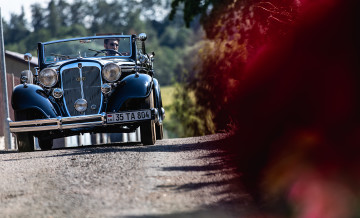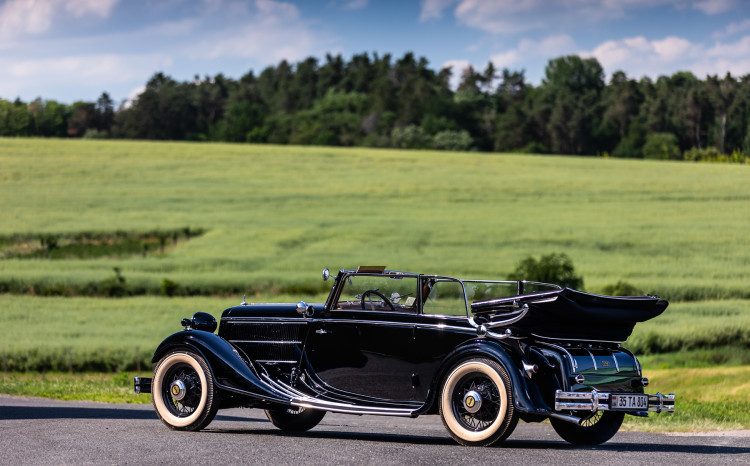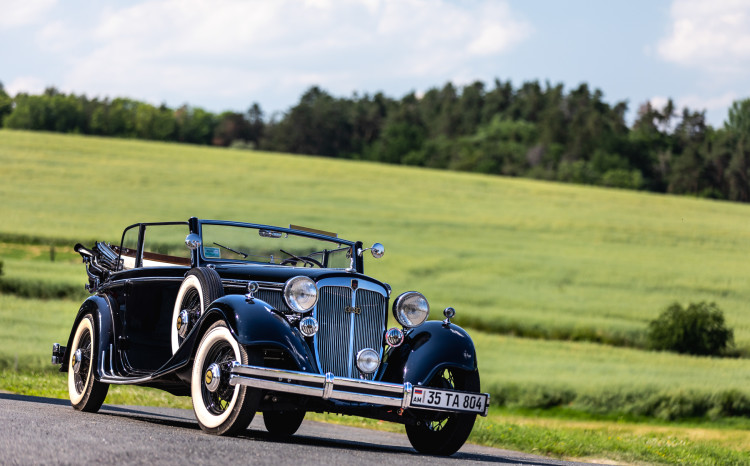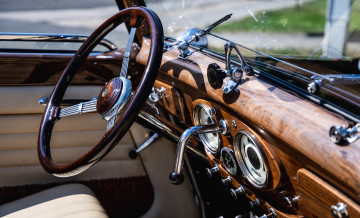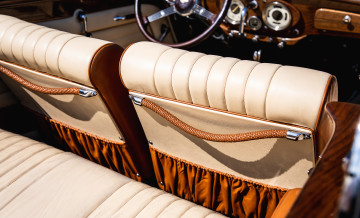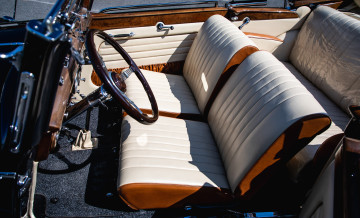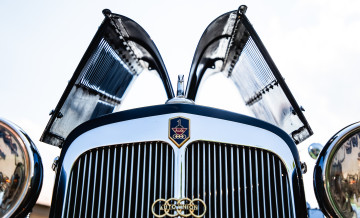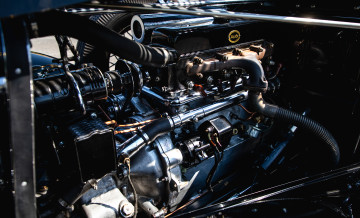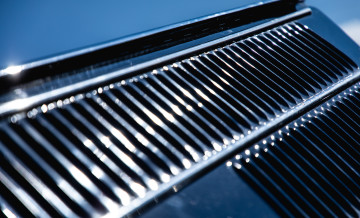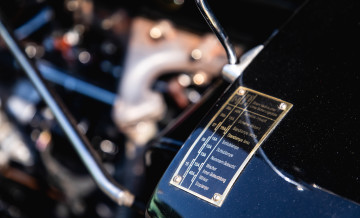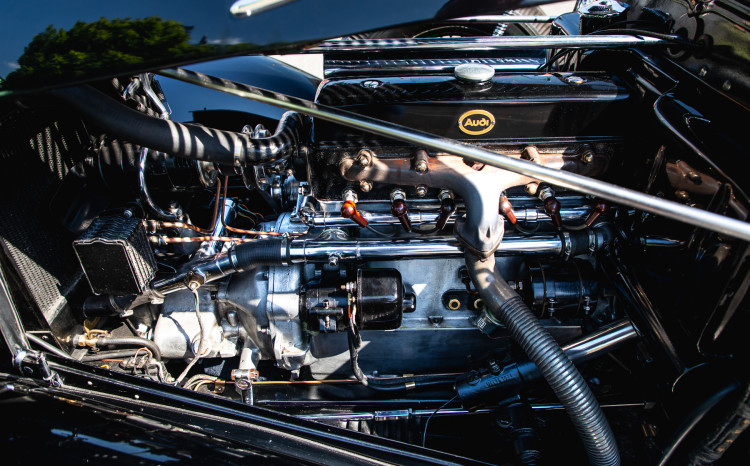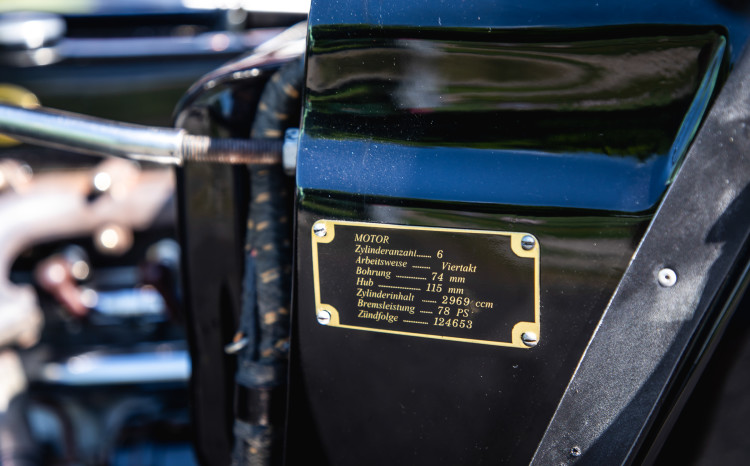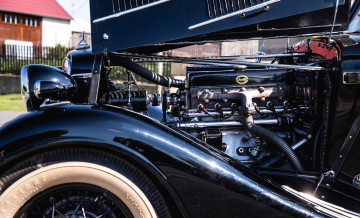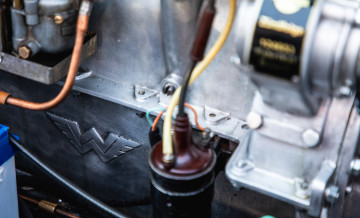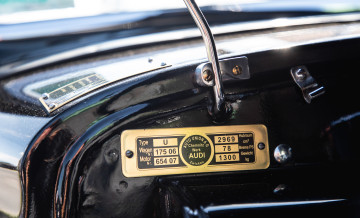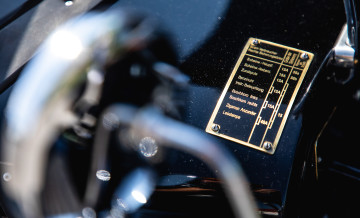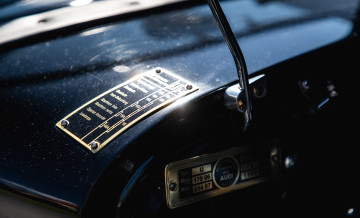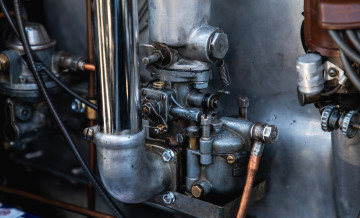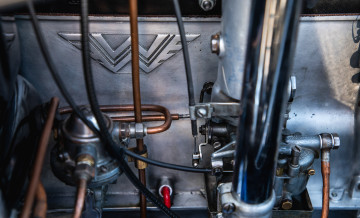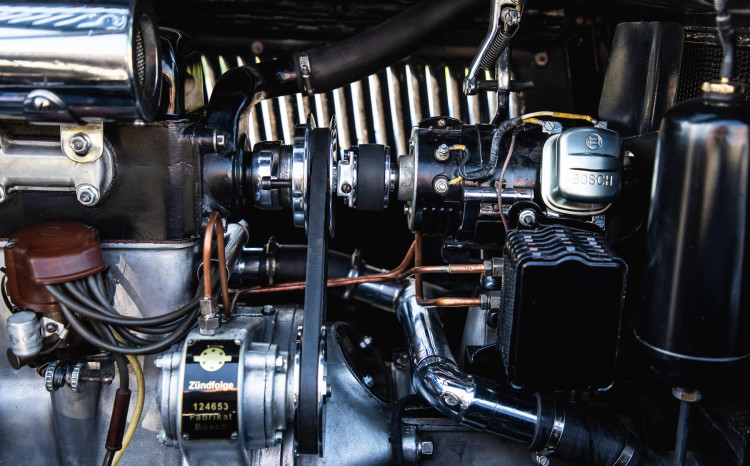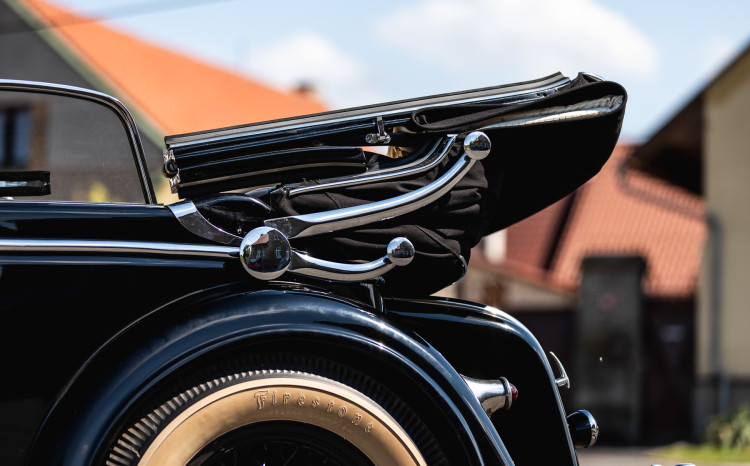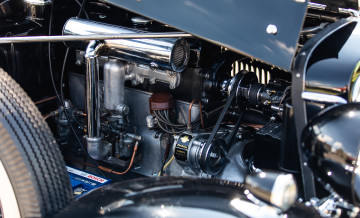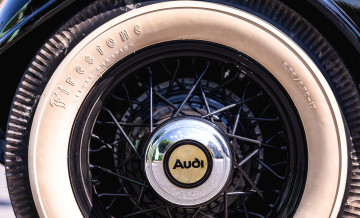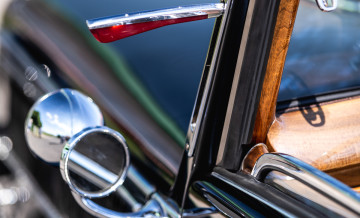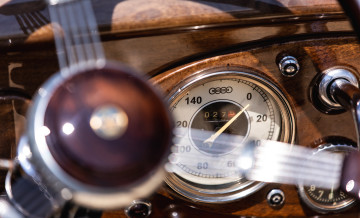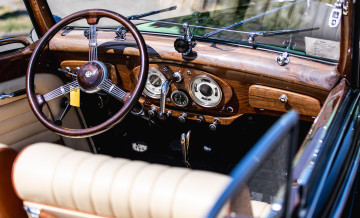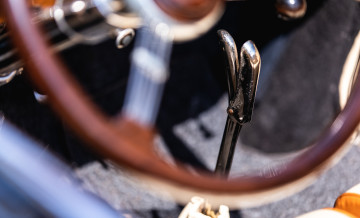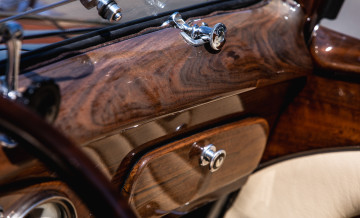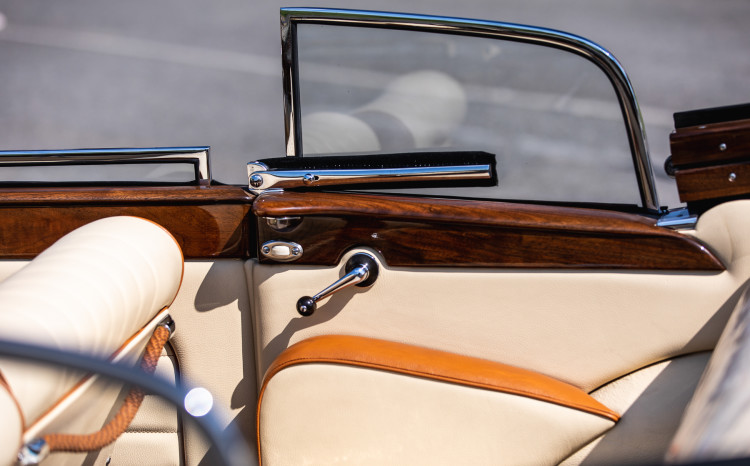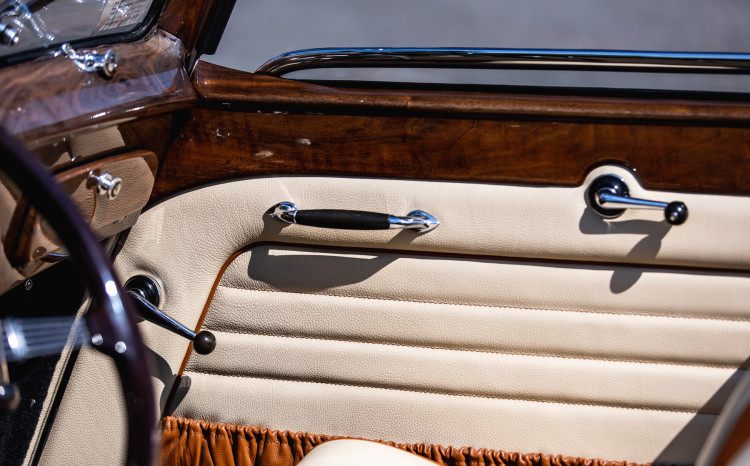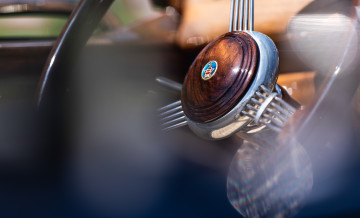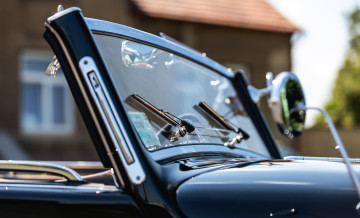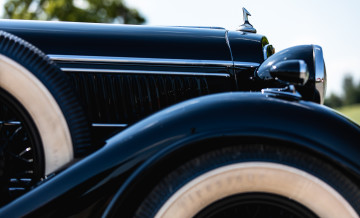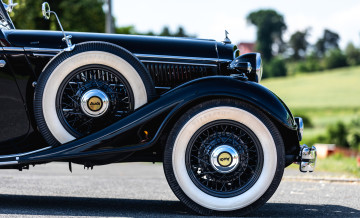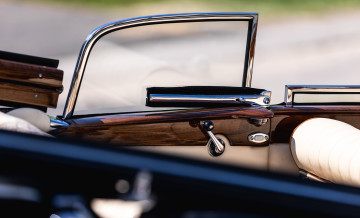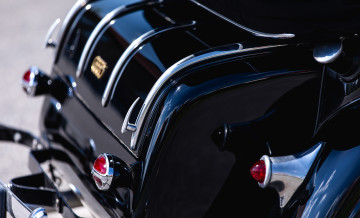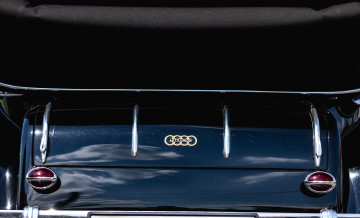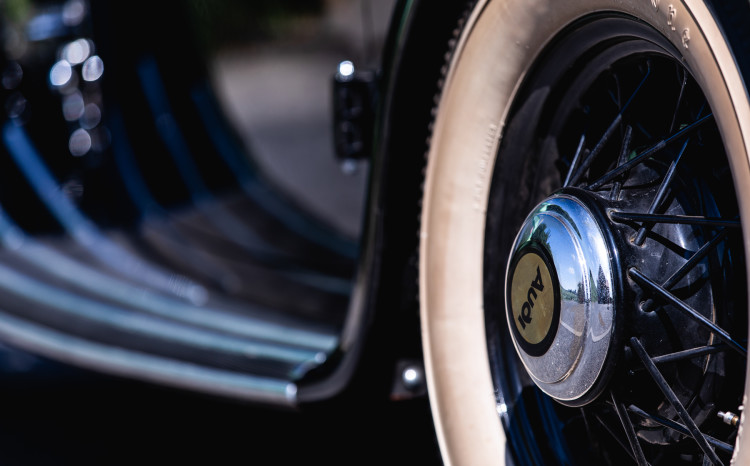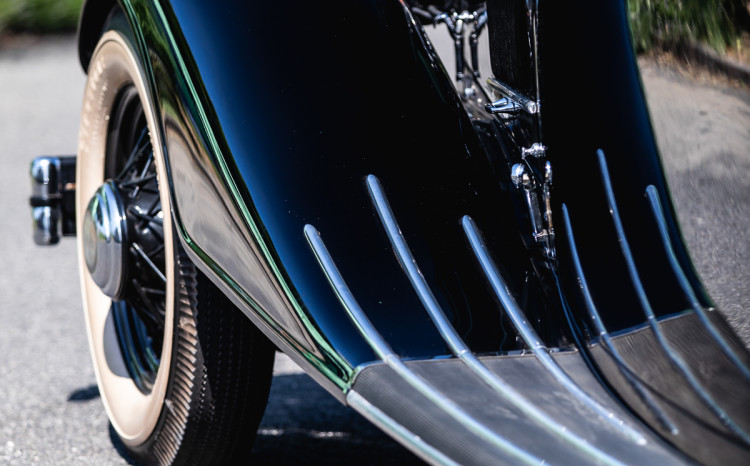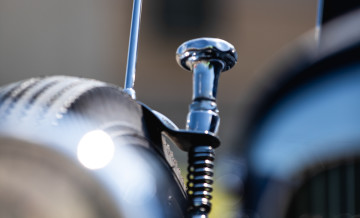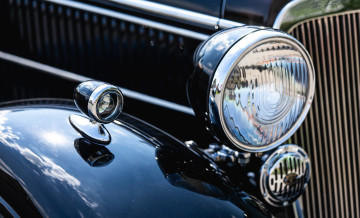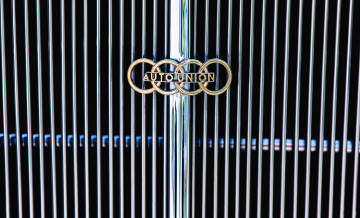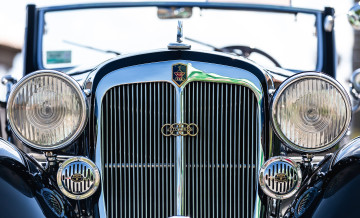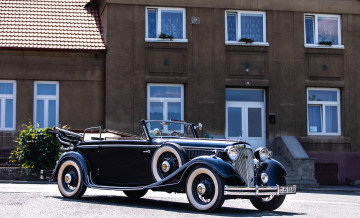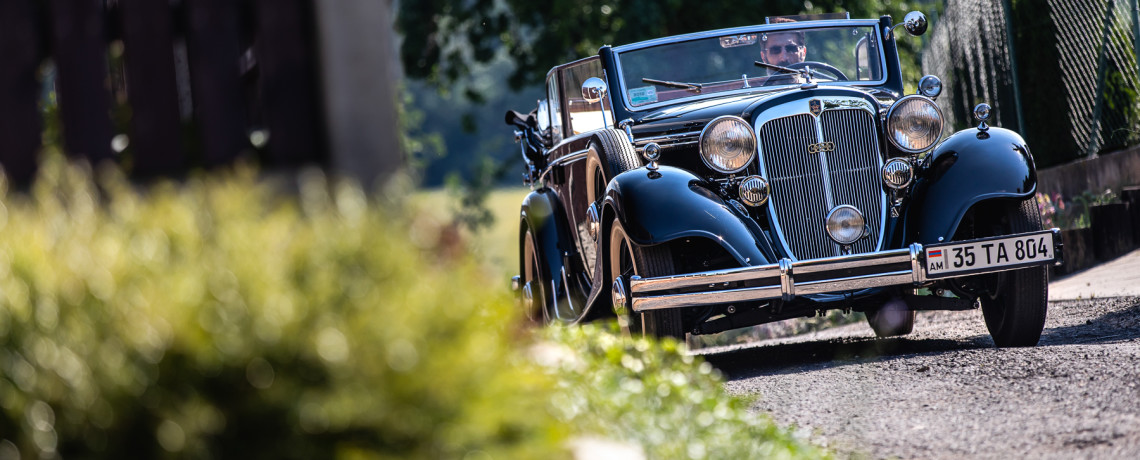
Words: František Vahala, Pictures: Ondřej Kroutil
Audi UW Front Cabriolet: Near history from far away
The precious Audi UW Front cabriolet didn’t have an easy life at all. Although its entire history is unknown, all you need to know is that it has experienced a really long journey – from Armenia to Czech Republic, looking for a new owner now.
Automobiles produced in Auto Union, a concern that no longer exists, are worth much more attention than they get, in my opinion. Let’s change it a bit because car brands like Horch, Audi, Wanderer or DKW are really worth it. Look at the example of the rare 1933 Audi with its turbulent fate. It has come to us from far away and we have helped it…
When I was younger, Auto Union cars (and in general, interwar or prewar cars) were not very appealing to me. It is quite logical. As expressed very wisely by an old gentleman many years ago when he was cleaning the dripping carburetor of his Horch on his coffee break at rallye Sachsen-Classic, it all depends on the age – a person born in the 80s is logically inclined to be fond of the poster cars of that time (usually flat and Italian). However, someone born before the war or during the war thinks of older cars. In time a teenager becomes an adult man, gets older and gains experience but also expands his horizons of interest.
It didn’t take long and I started to be interested in prewar and interwar cars more than in the after-war technology. To me, the automobiles dating back to the 30s represent highest elegance, sufficient technical standard, breathtaking technical and aesthetical solutions, real drive experience. Whereas in exhibitions and contests the cars we often admire are Alfa Romeos, Bentleys, Delahays, Talbots or Bugattis, there was a huge industrial complex not far from our home country producing vehicles that were at least comparable. Due to the fact I am from Litoměřice, North Bohemia, I feel even closer to it.
The reason for that is simple: it was the German Saxony that was the cradle of automobiles from the very beginning – a whole range of various machines was produced there. The most significant personage of the local automobile industry was definitely August Horch who was involved in several projects. He established the brand Horch and subsequently, in 1909, even Audi. Audi was on brands that formed the famous and big Auto Union concern consisting of various business companies. Four of them were most important – Audi, Horch Wanderer and DKW. In spite of the fact that four German brands were merged together (in form of a shareholder company), they kept producing vehicles under their own names. Logically, centralization of technological development occurred – for instance, Horch or Wanderer engines were installed in some Audi models.
In case you are interested in this part of the history or mister Horch in particular, we recommend visiting his museum located in the original manufacturing complex in Zwickau (about 150 km from Prague). You will definitely be fascinated with the extensive collections and perfectly presented history. For instance, you will find out some facts about the East German industry experiencing prosperity at the end of 30s giving rise to several interesting car models.
One of them is certainly Audi UW Front that was manufactured in Horch factory in 220 and 225 versions (depending on the engine 2.0 and 2.25 liters). In 1933, UW Front became the first European car combining front-wheel drive with six-cylinder engine. The original vehicle (220) had OHV straight six-cylinder with 1950 cm³ and maximum output 40 hp at 3500 rpm. The letters “UW” in the car’s name stood for “Umgekehrter Wanderer” and referred to the fact that it featured a Wanderer engine that had been “umgekehrt” (turned around) through 180 degrees in order to drive wheels which, on this application, were actually ahead of the engine. In detail, the engine was located behind the front axle, being quite common in vehicles then.
UW Front model was actually the only serially produced Audi car. There were alltogether 1817 vehicles of various types depending on the body, starting with four-door sports sedans up to a two-door cabriolets.
And then there were body shops; talking about the UW Front model, Gläser from Dresden in particular. It was established in 1864 by Carl Heinrich Gläser in Rampische Straße and the original intent was to have a workshop to make carriages and sledges. Due to the high quality the workshop got even assignments from royal stables. In 1898 Friedrich August Emil Heuer, son-in-law of Gläser who was originally a blacksmith, became co-owner. Gläser died in 1902.
Emil Heuer extended the company and unified all operations in the manufactory in Arnoldstraße 16/24 in Dresden-Johannstadt in 1913. It was really necessary based on the expansion; the company employed more than 200 people and had state-of-the-art technology. Not a long time after that they started producing bodywork for famous brands (all sorts). The base was traditionally wooden skeleton cladded with textile or based on the Weymann patent with a flexible textile, later on also metal, of course. Gläser produced classical bodywork such as phaeton, coupe, landaulet, limousine, pullman or cabriolet.
Sons of Emil Heuer, Georg and Erich, continued the business, whereas Georg was dedicated mainly to the automobile industry. Cabriolets produced in the 30s with their specific harmonic lines and well-balanced symmetry became very popular. Gläser was famous due to its easy-to-use folding roof mechanism the company had several patents registered on that.
Nevertheless, not everything was going smoothly. After cancelation of a big contract from General Motors the company got to big financial troubles and Georg committed suicide in 1932. During the World Word II Gläser-Karosserie GmbH focused on the production of panzers and bodywork for war vehicles and also parts of planes (for instance, holders of Messerschmitt Bf 109 guns or gondolas for engine mounts in Messerschmitt Me 262 nicknamed Swallow). The airstrikes on 13 and 14 February 1945 destroyed almost all of the Gläser factory.
And that exactly is the current problem. This car boasts with the body mentioned above and there are several question marks there as well. The history before the car purchase in 1984 in Kralovec (capital of Kaliningrad area, currently part of the Russian Federation) is very vague. The only thing we know for sure is that someone disassembled the car after the war (it was usual to do that with German cars to prevent government from confiscating them) and hid it. The previous owner didn’t have a clue he had a unique and valuable vehicle at home, let alone knowing about its history.
Being on the quest to discover the history of this vehicle, official Audi museum as well as experts could not help either. All agree on the fact that it is not a serial-production car as there was none of this kind. First, its equipment features several things that were seen in other models produced later (for instance, flaps built-in the windscreen frame, inner steering wheel frame, leather seats, fog light, wire wheels etc.) and second, it a 3-liter engine.
So either it is some sort of one-off concept tailor-made for someone – as it was produced in 1933 having NSDAP getting to power in Germany, it is probable that the car was manufactured for some of the Nazi chiefs. A common man would hardly order that and the symbol of eagle and swastika on the keychain speaks for this hypothesis.
Another possible story is that someone made changes on the vehicle during the war or after that. However, it is not very probable because there are the Gläser and Luxus Cabriolet tags there (as the Dresden bodywork produced common cabriolets too).
In addition – in spite of the fact the engine, body and gear numbers were sent to the department of classic cars in Ingolstadt, no records of the car were found. That itself is not so extraordinary because the war made a lot of documents disappear. Nevertheless, Ralf Friese, Audi expert who wrote a few books about various Audi types admits that the car is like a ghost – there are no records about it at all. The owner with his son wants to continue investigating but it seems that the history of this unique vehicle is hard to uncover, if not impossible.
The renovation being a high-quality one was made by the owner of the vehicle Avetik Pandeyan on his own in Armenia. He did his job all of his life and when he became master of his craft, he decided to renovate his most precious car. The vehicle was almost complete but the few things missing (for example the foldable „B-pillar“) was made exactly according to the original part. After seven years of hard work the wreck became a beautiful vehicle that was, of course, made in the original colour combination – black with fair interior.
If you like the vehicle on the pictures, you will find it even more appealing in real. The form is well-balanced, elegant, with fine lines going from the inclined radiator grille to the rare part. Roof folding takes a few seconds, the system works well and is easy to control just by one person. It is obvious from the side view that this vehicle was designed as a convertible, it is not a coupe with a cut-off roof. Elegant from all angles.
The 3-liter engine is starting and the exhaust pipe is releasing a puff of smoke. While driving on a land road with the owner, I watch the gear peaking out of the dashboard. The gear change is not synced at all so it requires the right grip – not too fast and not too slow. And of course, skill and power. Constant corrections of the direction are common but as soon as we change to four being the highest gear, the vehicle goes on the Czech road in a smooth and comfortable way. The interior is spacious enough and it is obvious that the vehicle longs for burning as much gas as possible to break in.
It has gone a long distance indeed – 3700 kilometers from Armenia, through Georgia, on a ferry across the Black Sea, then through Bulgaria, Serbia, Hungary, Slovakia to Czech Republic. However, the vehicle was in a closed trailer. Now it is getting used to its new homeland and waiting for its new owner. The current owner decided to sell the car in order to be able to spend his time on another gem and chisel his craft on it: an interwar Horch. If you are interested in this vehicle, contact the editors to get more information and connect with the owner.
The rare Audi is like a phantom. Here it is, out of the blue, going and showing off. Be it on the exhibition in Stuttgart or on the square of a small village near Prague, it attracts attention everywhere. But its story is covered with a veil of mystery that will hardly be unveiled by someone…
Article was published in Octane czech edition no. 5.
You can find more information about car here.
